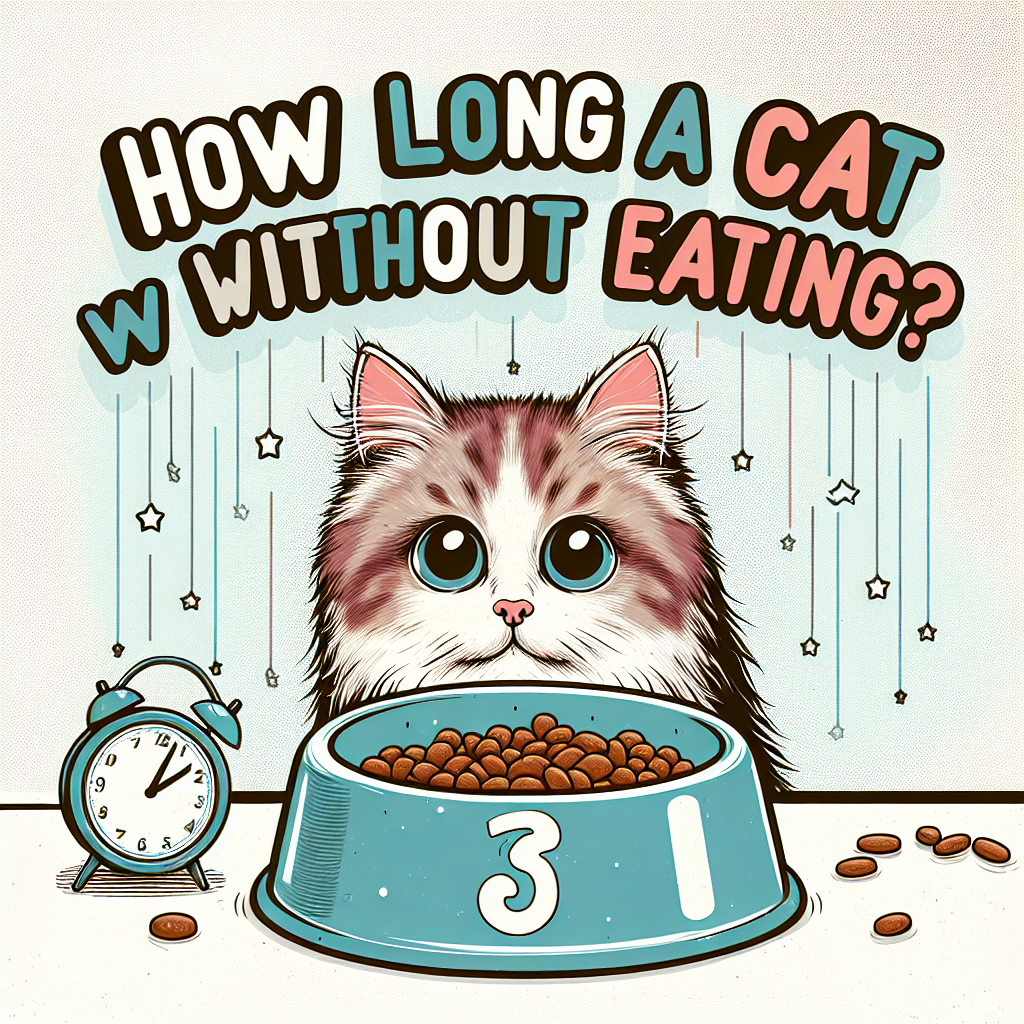How Long Can a Cat Go Without Eating?
As cat owners, we often find ourselves concerned about our feline friends’ health, particularly their eating habits. One common question that arises is: How long can a cat go without eating? The answer is not straightforward, as several factors influence a cat’s ability to survive without food.
The Basics of Feline Nutrition
Cats are obligate carnivores, which means that their diet primarily consists of meat. They require specific nutrients, including proteins, vitamins, and fats, that can be found in animal sources. Unlike dogs and humans, cats have a limited ability to adapt to a lack of food, making their nutritional needs particularly critical.
General Guidelines on Fasting
In general, a healthy cat can survive without food for about 1 to 2 weeks, though this varies depending on several factors:
-
Health Status: A healthy cat may cope better with short-term fasting than one that is ill or has underlying health issues. Cats that are diabetic or have liver disease may be at risk of serious complications more quickly.
-
Hydration: While a cat can survive longer without food than without water, hydration remains crucial. Cats can generally go about 3 to 5 days without water. Once dehydration sets in, it can lead to serious medical conditions very quickly.
-
Body Weight and Condition: Overweight or obese cats may be able to withstand periods without food longer than underweight cats. Conversely, a thin cat may face health risks sooner due to existing nutritional deficiencies.
- Age and Activity Level: Kittens and younger cats tend to have higher energy requirements compared to older cats. Active cats may require more frequent feeding than sedentary ones.
Risks of Prolonged Fasting
While cats may survive short periods without eating, prolonged fasting can result in serious health issues, including:
-
Hepatic Lipidosis: Also known as fatty liver disease, this condition can develop in cats that stop eating, especially those that are overweight. The body begins to metabolize fat for energy, which can overwhelm the liver and lead to severe health complications.
-
Malnutrition: Even after just a few days without food, a cat can start to suffer from nutrient deficiencies. This can result in lethargy, hair loss, weakness, and compromised immune function.
- Dehydration: As mentioned earlier, dehydration poses immediate risks. A dehydrated cat may show symptoms like dry gums, sunken eyes, and lethargy, leading to more serious complications if not addressed promptly.
Signs of Anorexia in Cats
If your cat is not eating, it’s essential to monitor them closely for signs of distress or illness. Some symptoms to look out for include:
- Vomiting or diarrhea
- Lethargy or decreased activity
- Changes in behavior or temperament
- Weight loss
- Excessive grooming or changes in litter box habits
What to Do If Your Cat Isn’t Eating
If your cat refuses to eat for more than 24 hours, or if you notice any concerning symptoms, it’s important to consult with your veterinarian. They can help determine the underlying cause of your cat’s unwillingness to eat and formulate an appropriate treatment plan.
Don’t attempt to force-feed your cat without professional guidance, as this can lead to additional stress and complications. Instead, your vet may suggest strategies such as:
- Offering tempting, high-quality food or wet food
- Providing a quiet, stress-free environment
- Using appetite stimulants or medications if appropriate
Conclusion
In summary, while a cat can technically survive for weeks without food, it is a precarious situation that carries significant health risks. With their unique dietary needs and susceptibility to severe health issues, it’s vital to monitor your cat’s eating habits closely. If they stop eating, don’t hesitate to seek veterinary care to ensure they remain healthy and happy companions for years to come.





